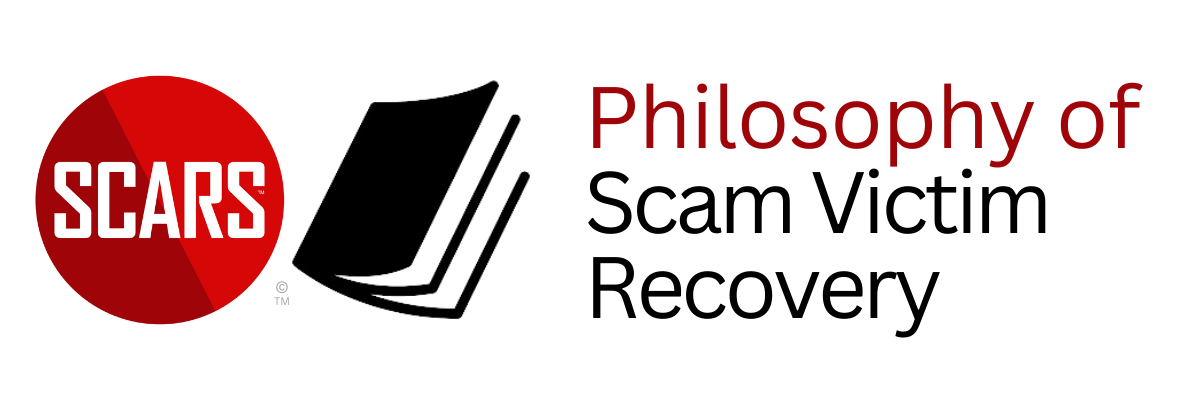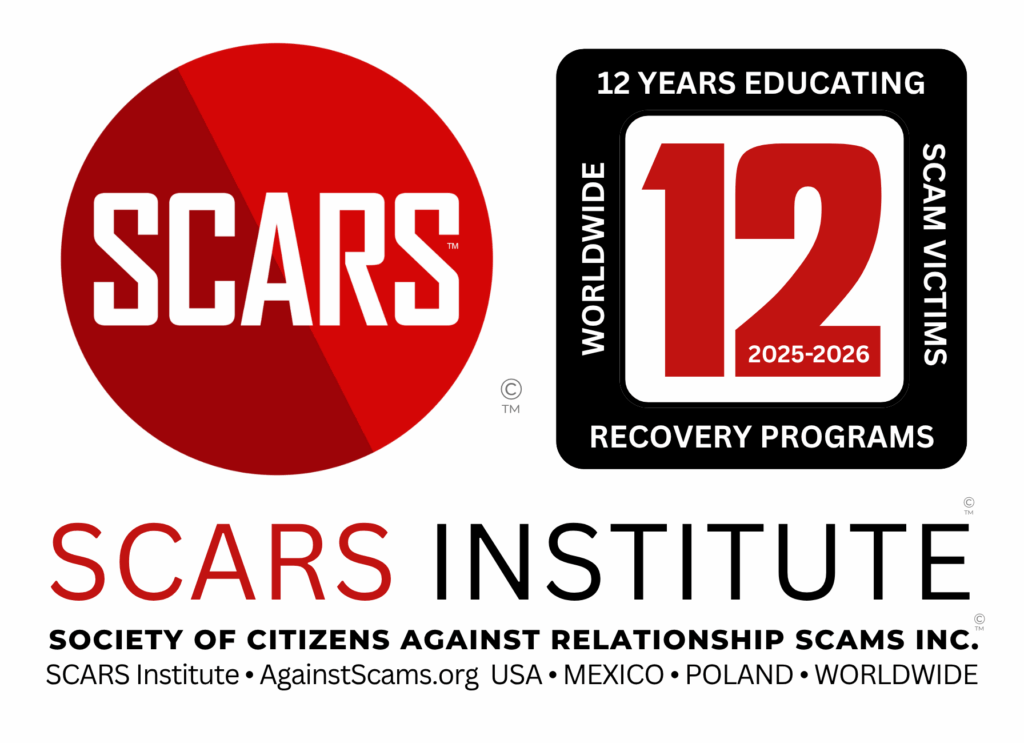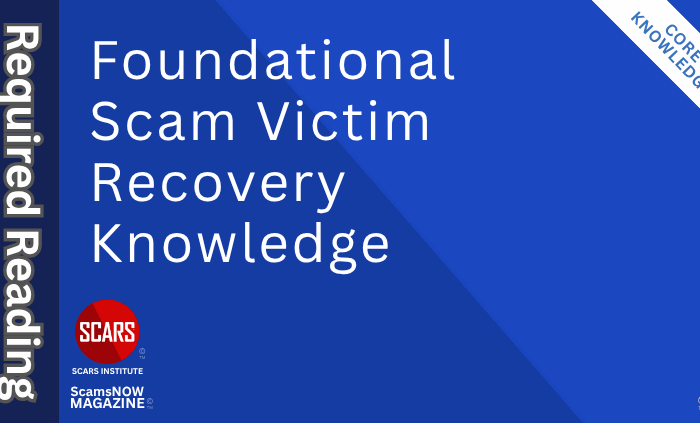Awakening from the Dream of Thought for Scam Victims
What is Awakening and What Does it Mean to Scam Victims Coming Out of Scam and Struggling to Recover
Primary Category: Philosophy of Scam Victim Recovery
Intended Audience: Scam Victims-Survivors / Family & Friends / General Public / Others
Authors:
• Tim McGuinness, Ph.D. – Anthropologist, Scientist, Director of the Society of Citizens Against Relationship Scams Inc.
• Based, in part, of the work of Dr. Martha Beck
About This Article
The concept of “awakening from the dream of thought” offers scam victims a transformative framework for recovering from deception and betrayal. Drawing from Asian philosophical traditions such as Buddhism, Taoism, and Hinduism, awakening represents the process of breaking free from mental constructs, illusions, and attachment to harmful thought patterns. For scam victims, this awakening parallels recognizing the false narratives created by scammers—narratives that play on desire, fear, and hope. Through mindfulness, cognitive reframing, and self-compassion, victims can begin to dissolve the shame and anxiety that often linger after being scammed. By seeing the scam as a projection of their unmet needs rather than a personal failing, victims open the door to healing and resilience.
Awakening involves gradual steps, such as grounding techniques, mindfulness practices, and reconnecting with trustworthy communities. Scam victims benefit from challenging the inner critic, setting healthy boundaries, and forgiving themselves for falling victim to deception. Through creative expression, advocacy, and education, victims transform pain into purpose, further dissolving the grip of the scam’s psychological impact. Ultimately, this journey mirrors spiritual awakening—where the goal is not to erase the past but to integrate its lessons, fostering growth, empowerment, and renewed faith in oneself and the world.

What is Awakening and What Does it Mean to Scam Victims Coming Out of Scam and Struggling to Recover
There are many different meanings for the term ‘Awakening,’ but we are going top talk about a concept known as ‘Awakening from the Dream of Thought.’ This is because it directly affects scam victims as the come out of the scam and struggle to survive and recover.
The concept of awakening from the dream of thought is deeply embedded in various Asian philosophical traditions, particularly in Buddhism, Taoism, and Hinduism. It reflects the idea of transcending the illusions and mental constructs that shape ordinary perception and consciousness. This awakening is often described as a shift from being trapped in the projections of the mind to experiencing reality as it truly is—free from attachment, distortion, and ego-driven narratives.
In a nutshell: this is about leaving the thought patterns behind that cause you suffering.
Trying Different Approaches
Trying different approaches during recovery from a scam can be essential because healing is not a one-size-fits-all process. Each individual processes trauma differently, and what works for one person may not resonate with another. Exploring various methods—such as mindfulness, therapy, journaling, or community engagement—allows victims to discover strategies that align with their unique emotional and psychological needs. This variety not only helps address different facets of the trauma but also prevents stagnation, ensuring that if one approach feels ineffective or overwhelming, others can offer new pathways toward progress.
Additionally, attempting multiple approaches builds resilience by improving adaptability and self-awareness. Engaging with different techniques encourages scam victims to remain open to growth, helping them regain confidence in their ability to navigate uncertainty. Over time, this exposure to different approaches process cultivates a deeper understanding of what promotes healing and empowerment, reinforcing the idea that recovery is a journey of continuous exploration rather than a linear destination. By remaining flexible and receptive to new methods, victims-survivors create opportunities for breakthroughs, making the recovery process more holistic and enduring.
Understanding Awakening from the Dream of Thought
In Buddhism – Awakening from the Illusion of Self (Nirvana or Satori)
In Buddhism, awakening is often referred to as enlightenment (Bodhi) or nirvana—the cessation of suffering and the realization of ultimate truth. Central to Buddhist philosophy is the idea that the self and the world are impermanent (anicca), unsatisfactory (dukkha), and lacking inherent essence (anatta).
-
-
- The Dream of Thought: In Buddhist terms, this “dream” is the constant stream of thoughts, desires, and attachments that veil reality. The mind fabricates stories, identities, and anxieties, leading to suffering. This state is called samsara—a cycle of mental entanglement and illusion.
- Awakening: Through practices like meditation and mindfulness, individuals can observe their thoughts as transient phenomena, rather than absolute truths. This leads to a dissolution of ego and the direct experience of emptiness (shunyata)—the understanding that all things are interconnected and without fixed identity.
-
A well-known metaphor is the illusion of the rope and the snake—one mistakes a rope for a snake in the dark. Upon shining a light (awareness), the snake disappears, revealing the rope as it is. Awakening is like that—dispelling the projections of the mind to see reality clearly.
Taoism – Awakening to Natural Flow (Wu Wei)
In Taoism, awakening is not framed as escaping suffering, but as harmonizing with the Tao (the Way)—the natural flow of the universe. The “dream of thought” represents the overactive, analytical mind that attempts to control or resist the flow of life.
-
-
- The Dream: Taoism suggests that rigid thinking and attachment to concepts create resistance, suffering, and separation from nature’s effortless unfolding.
- Awakening: The path to awakening involves wu wei (non-action or effortless action)—living spontaneously and intuitively, aligned with the Tao. This awakening brings a sense of ease and unity with all existence, dissolving the illusion of separateness.
-
Laozi’s famous phrase, “The Tao that can be spoken is not the eternal Tao”, highlights that thought and language are limited and often distort reality. True understanding transcends words and arises from direct experience.
Hinduism – Awakening from Maya (Illusion of the World)
In Hinduism, awakening is described as moksha (liberation)—freedom from the cycle of rebirth (samsara) and the realization of Brahman (ultimate reality).
-
-
- The Dream (Maya): Hindu philosophy describes the world as maya (illusion), where thoughts, desires, and sensory experiences veil the true nature of the self (Atman) and its unity with Brahman. The mind constructs an identity that is rooted in duality—subject and object, self and other.
- Awakening: Through self-inquiry (jnana yoga), meditation, and devotion, practitioners pierce through the veil of maya and recognize their true, eternal nature beyond the fleeting mind and body. This awakening is described as “Tat Tvam Asi” (Thou art That)—the realization that the individual self and the universal consciousness are one.
-
A classic analogy is the dreamer waking from sleep—what seemed real while dreaming dissolves upon waking, revealing a deeper, truer state of being.
Zen – Direct Awakening to the Present (Kensho or Satori)
In Zen Buddhism, awakening is often framed as kensho or satori—a sudden insight into the nature of existence. Zen emphasizes direct experience over intellectual understanding.
-
-
- The Dream: Zen teaches that the mind constantly labels, judges, and interprets reality, creating a false narrative of separation and conflict. This mental chatter obscures the simple, unfiltered reality of the present moment.
- Awakening: Through rigorous meditation (zazen) and koans (paradoxical riddles), practitioners are guided to experience moments of “no-mind” (mushin)—where thought ceases and reality is perceived as it is, without distortion.
-
A famous Zen saying, “Before enlightenment, chop wood, carry water. After enlightenment, chop wood, carry water,” illustrates that awakening doesn’t change the external world, but transforms one’s relationship to it.
Common Themes Across Traditions
-
-
- Illusion and Projection: Thought constructs are likened to dreams that mislead and veil reality.
- Awareness and Presence: Awakening comes through heightened awareness, stillness, and presence, dissolving mental constructs.
- Non-Duality: The realization that the separation between self and world is illusory.
- Emptiness and Fullness: Recognizing that reality is empty of fixed identity yet full of interconnectedness.
- Freedom from Fear and Desire: Awakening liberates individuals from suffering rooted in attachment, fear, and craving.
-
Awakening from the “dream of thought” is the realization that the mind’s constructs—while useful—are not ultimate. This shift brings a profound sense of peace, compassion, and clarity, as individuals align more deeply with reality itself.
Awakening Applied to Understanding the Deceptions and Betrayal of Scams and Fraud
The concept of awakening from the dream of thought offers a powerful framework for understanding the deceptions inherent in scams and fraud. Just as awakening in Eastern philosophies involves recognizing the illusions that cloud perception, scam victims often find themselves trapped in mental projections and false narratives created by scammers. By applying the principles of awakening, victims can learn to see through these deceptions, rebuild trust in themselves, and cultivate a sense of clarity and resilience.
Recognizing the Illusion (Maya and Samsara)
Scams often thrive on false realities—fabricated stories, deceptive personas, and the manipulation of emotions. Much like maya (illusion) in Hinduism or samsara (cyclic existence) in Buddhism, the scam constructs an alternate reality where the victim becomes entangled in hope, fear, and desire. Scammers craft narratives that trigger emotional responses, obscuring rational thought.
-
-
- Application: Victims can begin to recognize the dream-like nature of scams by learning how scammers manipulate their perceptions. This might involve educating themselves about common red flags, reflecting on past decisions without self-blame, and understanding how emotional triggers distort judgment.
- Example: Romance scams often create elaborate illusions of love and connection. Awakening involves seeing through this fantasy by recognizing patterns of over-idealization, rushed intimacy, and requests for secrecy or money.
-
The Role of Attachment and Desire (The Root of Suffering)
In scams, victims are often lured by promises that align with their desires—financial security, love, or opportunity. This mirrors Buddhist teachings that attachment to desires can lead to suffering. Scammers exploit these attachments, creating scenarios where victims chase outcomes that seem just within reach but remain elusive.
-
-
- Application: Victims can practice detachment and discernment by questioning their own desires and emotional investments in offers that seem too good to be true. Developing the ability to pause, reflect, and observe the emotional pull allows victims to see the scam for what it is—a mirage based on unmet needs or aspirations.
- Example: In investment fraud, victims may attach to the idea of wealth and quick returns. Recognizing this attachment helps ground decision-making in realistic evaluation rather than impulsive trust.
-
Observing Thought as Transient (No-Self and Emptiness)
Zen and Buddhist traditions teach that thoughts are fleeting and should not be mistaken for absolute truth. In scams, victims often internalize self-blame, guilt, or shame after being deceived. These emotions reinforce the belief that they were foolish or inherently flawed. However, just as thoughts arise and pass, these self-judgments are mental constructs rather than permanent realities.
-
-
- Application: Scam victims can observe their thoughts without identifying with them. By understanding that emotions and self-doubt are temporary mental states, victims create space for healing and self-compassion.
- Example: A victim might think, “I should have known better.” By stepping back and recognizing this thought as a fleeting judgment, they can reframe their experience: “I was deceived, but I am learning and growing from this.”
-
Awakening Through Presence (Living in the Now)
Scams often induce panic and urgency, pulling victims into future anxieties or past regrets. In contrast, awakening emphasizes grounding in the present moment. The more aware individuals are of the present, the less susceptible they are to manipulation rooted in imagined scenarios.
-
-
- Application: Victims can counteract the urgency scams create by slowing down and grounding themselves through mindfulness techniques. Simple actions like deep breathing, focusing on physical sensations, or questioning the necessity of immediate action can disrupt the scammer’s influence.
- Example: A victim receiving a call from a scammer impersonating a government official can pause and ask: “Why is this urgent? Can I step away and verify this separately?” This moment of pause often breaks the spell of urgency.
-
Dissolving the Illusion of Authority (Challenging the Dream’s Control)
In many scams, perpetrators present themselves as authorities or experts. Victims unconsciously defer to this authority, believing the scammer’s narrative without question. This mirrors the idea in Taoism and Buddhism that external authority often clouds inner wisdom.
-
-
- Application: Victims can awaken by challenging external authority and trusting their intuition. Questioning the legitimacy of those who demand immediate trust or payment weakens the scammer’s hold.
- Example: Scammers posing as tech support or law enforcement rely on the victim’s unquestioned compliance. Victims who adopt the Taoist principle of “not forcing” can disrupt the scam by refusing to act impulsively, instead choosing to observe, question, and verify.
-
Letting Go of the Past (The Scars of Deception)
A core teaching in Eastern thought is letting go—releasing attachments to past mistakes and grievances. Scam victims often carry lingering regret, dwelling on the deception long after it has ended. This can hinder recovery, reinforcing the belief that they are permanently damaged.
-
-
- Application: Victims can practice forgiveness and release the emotional weight of the scam by viewing it as a lesson rather than a defining failure. Just as awakening involves shedding layers of ego, victims can shed the narrative of victimhood, embracing a new identity rooted in resilience.
- Example: A victim of identity theft may spend years haunted by the betrayal. By practicing self-compassion and acceptance, they shift from identifying as a victim to embracing the journey of healing.
-
Faith in the Unseen (Trusting the Process of Awakening)
Hindu and Buddhist traditions emphasize faith in the unfolding of life’s path, even in the face of uncertainty. Scam victims often struggle to rebuild faith in humanity or their own judgment after being deceived. Awakening, in this sense, involves cultivating faith in the gradual process of healing and learning.
-
-
- Application: Victims can foster faith in their capacity to recover by seeking support from others, engaging in communities, and trusting that clarity will emerge over time.
- Example: By joining scam recovery groups, victims witness shared experiences, reinforcing the belief that healing is not only possible but inevitable.
-
Awakening from the dream of thought in the context of scams mirrors the spiritual journey of seeing through illusions to discover deeper truths. By cultivating awareness, questioning attachments, and observing thoughts without judgment, scam victims can step out of the deceptive narratives imposed upon them. This process not only heals the wounds left by deception but also fosters resilience, empowering victims to navigate life with greater clarity, self-trust, and insight.
15 Steps that a Scam Victim Can Take to Awaken and Free Their Minds from the Trauma and Anxiety of the Deception and Betrayal of Their Scam
Here are 15 concrete steps scam victims can take to awaken from the emotional and psychological grip of deception and betrayal, freeing their minds from trauma and anxiety:
STEP 1: Pause and Break the Cycle of Rumination
-
- Action: When overwhelmed by thoughts about the scam, consciously stop and take a deep breath. Count to 5 during the inhale, hold for 2 seconds, and exhale slowly.
- Why: This interrupts the mental loop of blame and regret, grounding you in the present moment.
- Example: When the scam resurfaces in your mind, say aloud: “I release this thought. I am safe now.”
STEP 2: Acknowledge and Accept the Experience Without Judgment
-
- Action: Journal the facts of the scam, separating what happened from how you feel about it. Avoid emotionally charged language.
- Why: Acknowledging the experience objectively reduces the emotional weight and helps reframe the narrative as an event, not an identity.
- Example: Write: “I was deceived. I trusted someone who exploited me. This doesn’t define my worth or intelligence.”
STEP 3: Engage in Mindfulness or Meditation Practices
-
- Action: Dedicate 10-15 minutes daily to mindfulness. Focus on your breath or body sensations. If your mind drifts to the scam, gently redirect attention to the present.
- Why: Mindfulness weakens the emotional hold of past events and decreases anxiety by anchoring you in the now.
- Example: Use guided meditation apps like Headspace or Calm specifically designed for trauma and stress.
STEP 4: Limit Exposure to Triggers
-
- Action: Reduce or avoid situations that trigger scam-related thoughts, such as scam-related forums or news, until you feel emotionally stronger.
- Why: Constant exposure can reinforce trauma, while space allows emotional recovery.
- Example: If forums about scams increase anxiety, take a 2-week break and focus on personal healing.
STEP 5: Challenge the Inner Critic (Cognitive Reframing)
-
- Action: Identify negative thoughts (e.g., “I was stupid”). Reframe them with compassionate, factual responses (e.g., “I was deceived by a professional scammer”).
- Why: Reframing interrupts self-blame and fosters self-compassion.
- Example: Replace “I’m weak” with “I am learning and growing through this experience.”
STEP 6: Reconnect with the Body (Somatic Awareness)
-
- Action: Engage in activities that reconnect you with your physical body—walking, yoga, or tai chi. Pay attention to sensations rather than thoughts.
- Why: Trauma resides not just in the mind but in the body. Physical movement helps release trapped stress.
- Example: Take a 15-minute walk focusing on how your feet connect to the ground. Let the physical experience anchor you.
STEP 7: Practice Grounding Techniques During Anxiety
-
- Action: When experiencing anxiety, use the 5-4-3-2-1 method:
- 5 things you see
- 4 things you touch
- 3 things you hear
- 2 things you smell
- 1 thing you taste
- Why: This technique shifts attention from spiraling thoughts to the sensory world, grounding you in reality.
- Example: If panic rises, hold a textured object (like a rock) and focus on its feel and weight.
- Action: When experiencing anxiety, use the 5-4-3-2-1 method:
STEP 8: Forgive Yourself Actively
-
- Action: Stand in front of a mirror and say aloud, “I forgive myself. I was manipulated, but I will heal.” Repeat this daily.
- Why: Self-forgiveness frees the mind from guilt and promotes emotional release.
- Example: Write a letter to yourself, acknowledging the pain but offering compassion and forgiveness.
STEP 9: Reconnect with Support Networks
-
- Action: Join scam recovery groups, whether online or in-person. Share your experience in safe spaces with others who understand.
- Why: Community support normalizes your experience and reduces isolation.
- Example: Attend local victim-support meetings or join forums run by victim advocacy groups like SCARS (Society of Citizens Against Relationship Scams).
STEP 10: Set Healthy Boundaries with Yourself and Others
-
- Action: Practice saying no to suspicious requests and trust your instincts even if it feels uncomfortable.
- Why: Strengthening boundaries rebuilds trust in your judgment.
- Example: If someone pressures you financially or emotionally, respond with “I need time to think about this.”
STEP 11: Channel Pain into Purpose (Advocacy and Education)
-
- Action: Volunteer or participate in scam awareness campaigns. Sharing your story empowers others.
- Why: Transforming your experience into advocacy reframes the scam as a stepping stone for growth rather than a point of failure.
- Example: Offer to speak at community fraud prevention events or write articles for victim support websites.
STEP 12: Seek Professional Support (Therapists, Counselors, or Coaches)
-
- Action: Work with a therapist trained in trauma or fraud recovery. Focus on cognitive-behavioral therapy (CBT) or somatic therapy.
- Why: Professional guidance accelerates healing and helps process trauma effectively.
- Example: Search for therapists specializing in financial trauma or betrayal trauma.
STEP 13: Rebuild Faith in Yourself and Humanity
-
- Action: Consciously acknowledge good experiences and trustworthy relationships. Reflect on small moments of kindness or personal success.
- Why: Scam victims often lose faith in humanity. Actively recognizing goodness rebuilds trust in others and oneself.
- Example: Keep a gratitude journal listing three positive things or interactions daily.
STEP 14: Engage in Creative Expression
-
- Action: Use art, music, or writing to express emotions related to the scam.
- Why: Creativity provides a safe outlet for processing complex feelings.
- Example: Paint or write about your recovery process, focusing on how you are evolving.
STEP 15: Accept the Journey Without Needing Instant Closure
-
- Action: Understand that healing from scams is a gradual process. Let go of the need for immediate resolution.
- Why: Accepting the non-linear nature of recovery reduces frustration and self-pressure.
- Example: When setbacks occur, remind yourself: “I am moving forward, even if slowly.”
Final Thought
Awakening from the deception of scams is not just about reclaiming money or trust—it is about reclaiming the narrative of your life. By applying these steps consistently, victims can step out of the mental fog of betrayal and into a space of clarity, empowerment, and renewal.
-/ 30 /-
What do you think about this?
Please share your thoughts in a comment below!
-/ 30 /-
What do you think about this?
Please share your thoughts in a comment below!
Important Information for New Scam Victims
- Please visit www.ScamVictimsSupport.org – a SCARS Website for New Scam Victims & Sextortion Victims.
- SCARS Institute now offers its free, safe, and private Scam Survivor’s Support Community at www.SCARScommunity.org – this is not on a social media platform, it is our own safe & secure platform created by the SCARS Institute especially for scam victims & survivors.
- SCARS Institute now offers a free recovery learning program at www.SCARSeducation.org.
- Please visit www.ScamPsychology.org – to more fully understand the psychological concepts involved in scams and scam victim recovery.
If you are looking for local trauma counselors, please visit counseling.AgainstScams.org
If you need to speak with someone now, you can dial 988 or find phone numbers for crisis hotlines all around the world here: www.opencounseling.com/suicide-hotlines
Statement About Victim Blaming
Some of our articles discuss various aspects of victims. This is both about better understanding victims (the science of victimology) and their behaviors and psychology. This helps us to educate victims/survivors about why these crimes happened and not to blame themselves, better develop recovery programs, and help victims avoid scams in the future. At times, this may sound like blaming the victim, but it does not blame scam victims; we are simply explaining the hows and whys of the experience victims have.
These articles, about the Psychology of Scams or Victim Psychology – meaning that all humans have psychological or cognitive characteristics in common that can either be exploited or work against us – help us all to understand the unique challenges victims face before, during, and after scams, fraud, or cybercrimes. These sometimes talk about some of the vulnerabilities the scammers exploit. Victims rarely have control of them or are even aware of them, until something like a scam happens, and then they can learn how their mind works and how to overcome these mechanisms.
Articles like these help victims and others understand these processes and how to help prevent them from being exploited again or to help them recover more easily by understanding their post-scam behaviors. Learn more about the Psychology of Scams at www.ScamPsychology.org
SCARS INSTITUTE RESOURCES:
If You Have Been Victimized By A Scam Or Cybercrime
♦ If you are a victim of scams, go to www.ScamVictimsSupport.org for real knowledge and help
♦ SCARS Institute now offers its free, safe, and private Scam Survivor’s Support Community at www.SCARScommunity.org/register – this is not on a social media platform, it is our own safe & secure platform created by the SCARS Institute especially for scam victims & survivors.
♦ Enroll in SCARS Scam Survivor’s School now at www.SCARSeducation.org
♦ To report criminals, visit https://reporting.AgainstScams.org – we will NEVER give your data to money recovery companies like some do!
♦ Follow us and find our podcasts, webinars, and helpful videos on YouTube: https://www.youtube.com/@RomancescamsNowcom
♦ Learn about the Psychology of Scams at www.ScamPsychology.org
♦ Dig deeper into the reality of scams, fraud, and cybercrime at www.ScamsNOW.com and www.RomanceScamsNOW.com
♦ Scam Survivor’s Stories: www.ScamSurvivorStories.org
♦ For Scam Victim Advocates visit www.ScamVictimsAdvocates.org
♦ See more scammer photos on www.ScammerPhotos.com
You can also find the SCARS Institute’s knowledge and information on Facebook, Instagram, X, LinkedIn, and TruthSocial
Psychology Disclaimer:
All articles about psychology and the human brain on this website are for information & education only
The information provided in this and other SCARS articles are intended for educational and self-help purposes only and should not be construed as a substitute for professional therapy or counseling.
Note about Mindfulness: Mindfulness practices have the potential to create psychological distress for some individuals. Please consult a mental health professional or experienced meditation instructor for guidance should you encounter difficulties.
While any self-help techniques outlined herein may be beneficial for scam victims seeking to recover from their experience and move towards recovery, it is important to consult with a qualified mental health professional before initiating any course of action. Each individual’s experience and needs are unique, and what works for one person may not be suitable for another.
Additionally, any approach may not be appropriate for individuals with certain pre-existing mental health conditions or trauma histories. It is advisable to seek guidance from a licensed therapist or counselor who can provide personalized support, guidance, and treatment tailored to your specific needs.
If you are experiencing significant distress or emotional difficulties related to a scam or other traumatic event, please consult your doctor or mental health provider for appropriate care and support.
Also read our SCARS Institute Statement about Professional Care for Scam Victims – click here
If you are in crisis, feeling desperate, or in despair, please call 988 or your local crisis hotline – international numbers here.
More ScamsNOW.com Articles
A Question of Trust
At the SCARS Institute, we invite you to do your own research on the topics we speak about and publish. Our team investigates the subject being discussed, especially when it comes to understanding the scam victims-survivors’ experience. You can do Google searches, but in many cases, you will have to wade through scientific papers and studies. However, remember that biases and perspectives matter and influence the outcome. Regardless, we encourage you to explore these topics as thoroughly as you can for your own awareness.















![NavyLogo@4x-81[1] Awakening from the Dream of Thought for Scam Victims - 2025](https://scamsnow.com/wp-content/uploads/2025/04/NavyLogo@4x-811.png)









![scars-institute[1] Awakening from the Dream of Thought for Scam Victims - 2025](https://scamsnow.com/wp-content/uploads/2025/04/scars-institute1.png)
![niprc1.png1_-150×1501-1[1] Awakening from the Dream of Thought for Scam Victims - 2025](https://scamsnow.com/wp-content/uploads/2025/04/niprc1.png1_-150x1501-11.webp)
